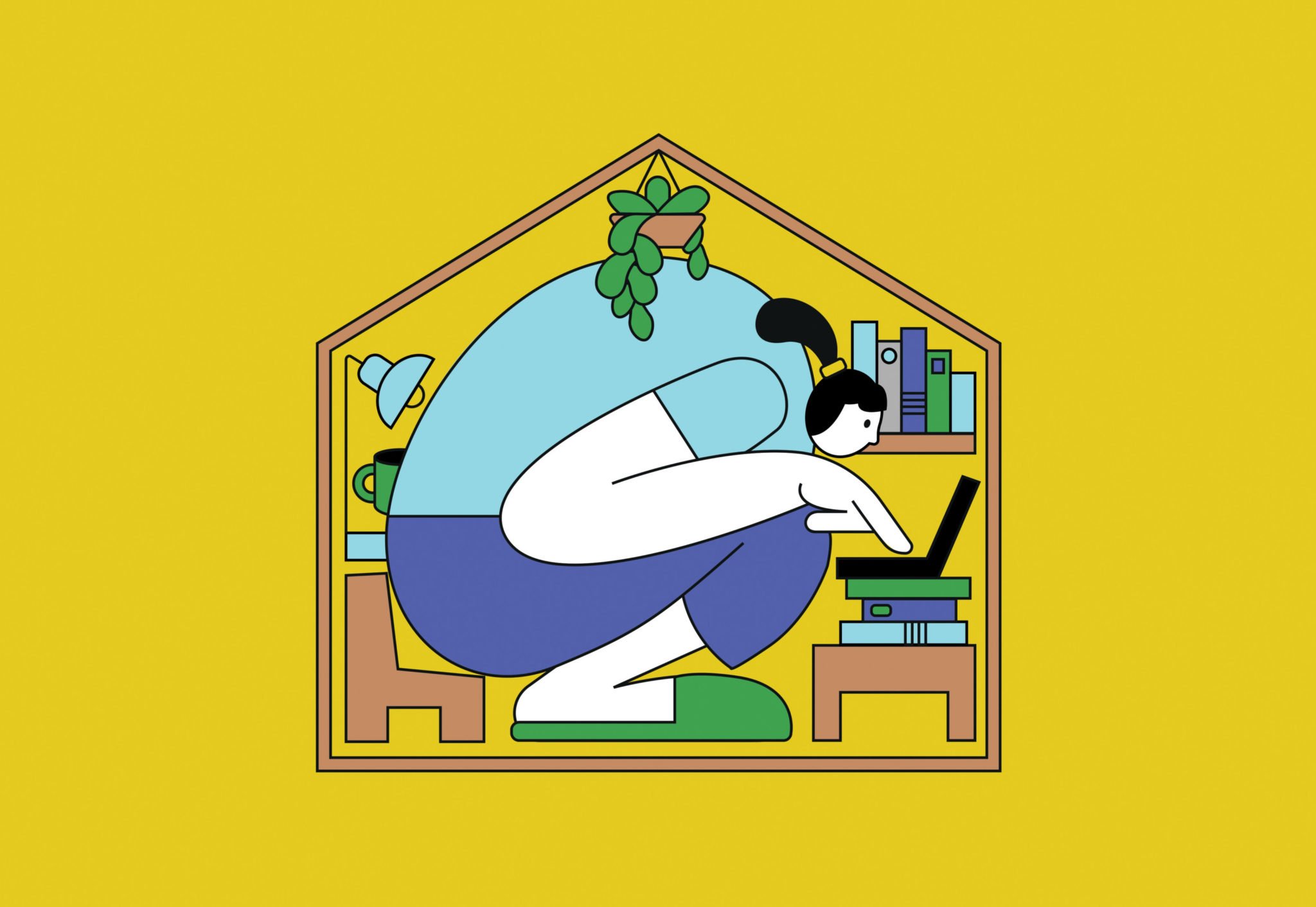Even before the pandemic, Brian Donovan was no stranger to working from home. His job as a technical writer for a software company had allowed him to abandon in-person work ten years ago. He had a comfy home office with a cushioned desk chair and three eye-level monitors, enough to take several video calls a day while analyzing multiple screens of data.
But when Covid upended the country in March 2020, Donovan—who lives in Arlington with his wife and two kids—relinquished that room so his children would have a place for remote schooling. He relocated to the guest bedroom, moving his laptop and monitors to a folding table and bookshelf. One problem: A bed and an open closet could be seen from almost any angle behind him. To get the cleanest background during Zoom meetings, he had to turn his head to look at the rightmost computer screen while the rest of his body faced the two other ones.
A month later, Donovan felt a dull pain in his right shoulder that turned into a numb, tingling sensation down his arm and hand. It made the muscles on his entire right side feel weak, forcing him to sit in whatever awkward position gave him temporary relief. His wife, Skye, who happens to be an orthopedic physical therapist, instantly knew that the reason for his pain was the way he was sitting.
Those who work from home should also take frequent small breaks to walk around the house or the block to keep from staying in one position too long.
Skye moved his workspace to another room, where Brian could put his monitors at eye level in front of him and make sure his arms were supported. She coached him on strengthening exercises, such as walking lunges and squats, and made him get up once an hour to take a short walk around the house. In a matter of a few weeks, Brian’s pain had subsided and his posture improved.
Brian Donovan is one out of millions of remote workers who have experienced musculoskeletal injuries and discomfort since the nationwide shift to working from home. A survey commissioned by the insurance company Chubb found that more than 40 percent of Americans have felt increased shoulder, back, or wrist pain since working from home. An American Chiropractic Association poll reported that 92 percent of chiropractors have seen a rise in patients with musculoskeletal issues. “People who were forced to work from home without the space and equipment really saw an uptick in injuries because they were working from wherever they could, whether it was their kitchen table or couch,” says Skye Donovan, who is also the director of Marymount University’s School of Health Sciences.
More than two years have passed since the stay-at-home orders, and many people have gone back to their offices. But Claire Bowe, a physical therapist at Rose Physical Therapy Group in downtown DC, says patients are still reporting musculoskeletal injuries including pinched nerves, carpal tunnel, temporomandibular joint (TMJ) dysfunction, tension headaches, and even sleep dysfunction. Bowe says some of that is no surprise, given the high number of office workers in the region, who tend to sit at computers all day. Yet she suspects that pandemic-related and political tension over the past few years have also contributed. “The biggest influences on your physical capacity are stress, hydration, nutrition, and sleep,” she says. “When one of those four things is thrown off, it will throw off your mechanics.”
Skye Donovan believes one of the best things people can do to prevent these micro-traumatic injuries is to create a dedicated space for working. You don’t have to buy a fancy leather chair with built-in massage. She insists that a chair that has armrests and positions your hips higher than your knees works just fine. If you don’t have one with armrests, sitting at a table where your hands are higher than your elbows is okay, too. It’s also important to have your computer screen at eye level to keep you from tilting your head backward and forward, which strains your neck and shoulders. “You want everything in alignment,” she says.
Stretching is also your friend, says Bowe. There’s no secret combination of moves that people have to figure out. It can be as simple as stretching your hamstrings or moving your head and neck from side to side for 30 seconds. “None of it is rocket science,” she says. “You just want to add mobility into your daily routine.”
Those who work from home should also take frequent small breaks to walk around the house or the block to keep from staying in one position too long. “People don’t have a good separation of work and home, so they’re working longer hours,” Skye Donovan says. “Any kind of sustained position for a long time, whether it’s sitting or standing, takes a toll.”
If you have pain that lasts more than a week or limits you from doing any of your normal activities, Bowe recommends seeing a physical therapist. Studies have shown that untreated acute pain can lead to the chronic or permanent kind, so seeking treatment once the pain starts could save you years of discomfort and thousands in medical costs. “Most aches and pains have very simple solutions, even those that have been around for 20-plus years” she says. “Just because it’s chronic doesn’t mean it isn’t solvable.”



















